'The Fall of Man'
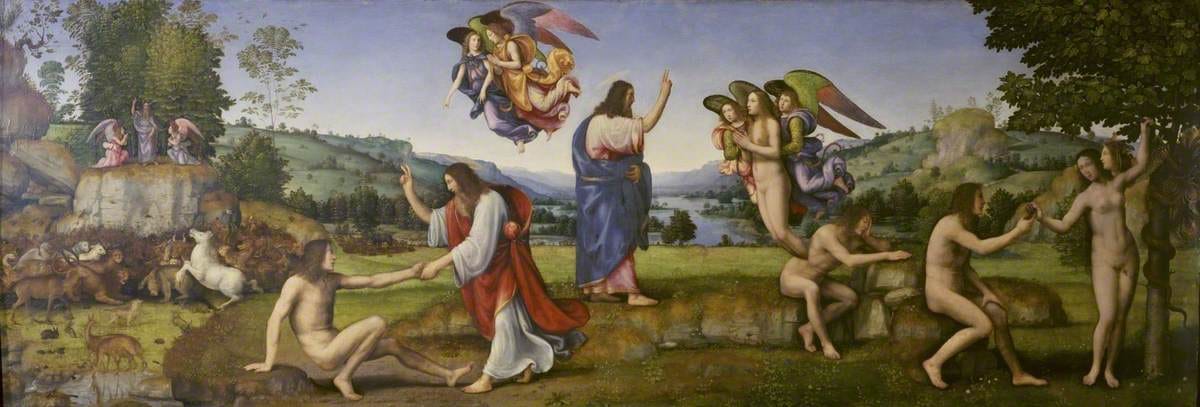
It’s called The Fall of Man, and in famous paintings it's the snake’s fault and it’s Eve’s fault: “Her rash hand in evil hour…” Has there ever been a more popular subject in art history?
The painting below is by Michelangelo from the Sistine Chapel ceiling (between 1508-1512) - more here. Others who tried their hand at it included Lucas Cranach the Elder, who was associated with Protestant reformers like Martin Luther (1526), when the world did indeed seem in free fall to Catholics. Rubens, who was Catholic, painted it when he was only 20 (in 1597), as did William Blake (circa 1808).
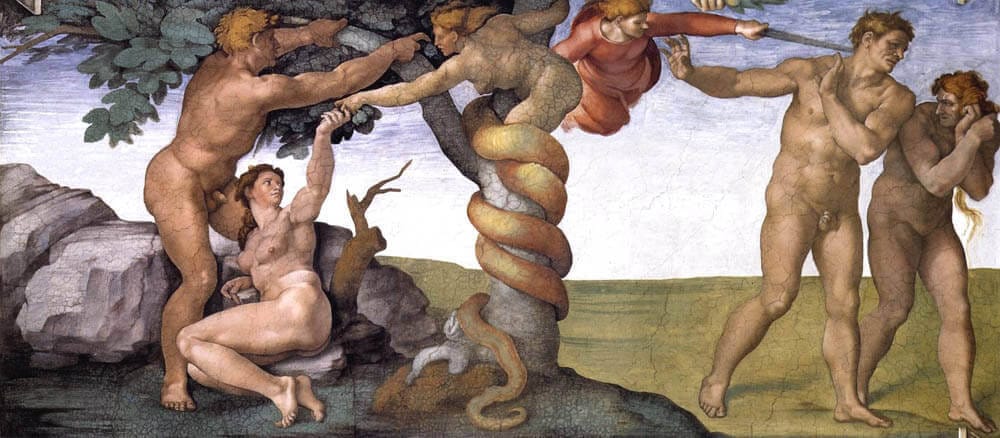
It is Eve's role that continues to fascinate anyone interested in art history. The early Christian church fathers were quite explicit in extending the blame for the Fall to all women. Tertullian calls them "the Devil's gateway" and things hadn't improved by the time of Aquinas, who called women "defective and misbegotten."
Then consider these three images of Eve, the first by van Eyck (between 1426 and 1432), the second by Albrecht Dürer (in 1507) and the last by Lucas Cranach the Elder (in 1528). They are on separate altarpiece panels from Adam, but their more overt sexuality is a step up, in keeping with what the story is about.

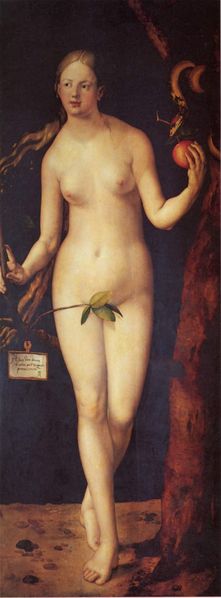
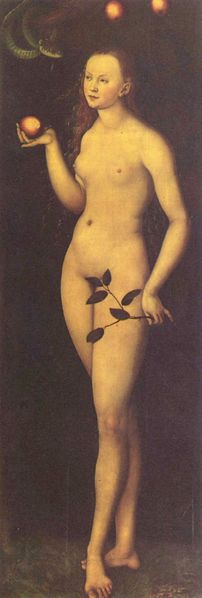
Then compare them to this explicitly erotic vision by Hans Baldung Grien from 1511, where Adam doesn't seem that interested in the apple.
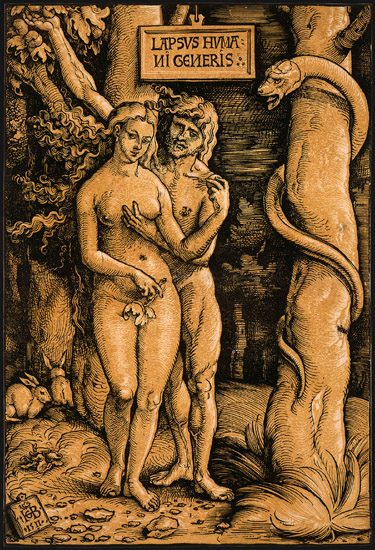
I also like this image by another German artist Sebald Beham from 1543, where the serpent appears to be accompanied by Death himself. No fig leaves either.
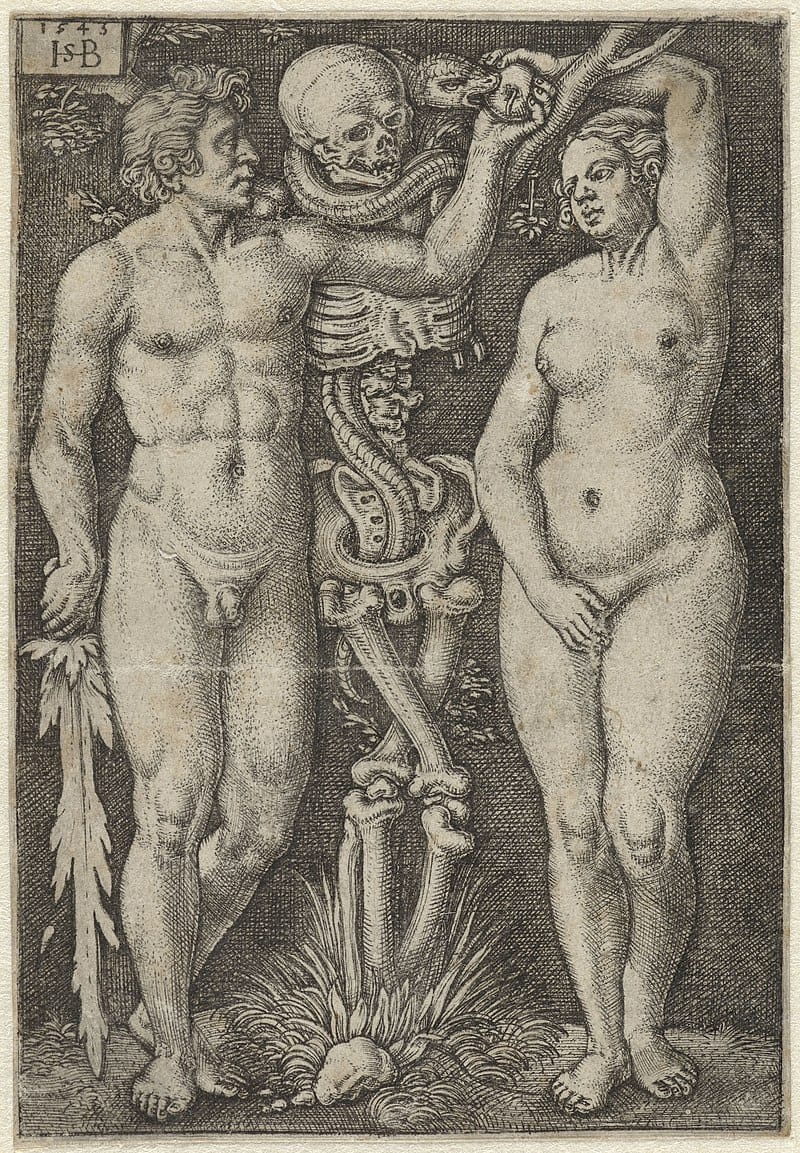
The explicit erotic content in Renaissance paintings, especially in Germany, suggests that Church teachings were already eroding and allowing sex without sin back into the interpretations of Genesis and Exodus. If Eden was the womb and the river out of Eden was the umbilical cord, and Exodus was the journey after leaving the womb, crossing the Red Sea, with its hint of blood, then it was hard to escape the idea that women were the life force itself, and that this was not sinful at all (more here). For example, this is German sculptor Georg Petel's The temptation of Adam and Eve from 1627.
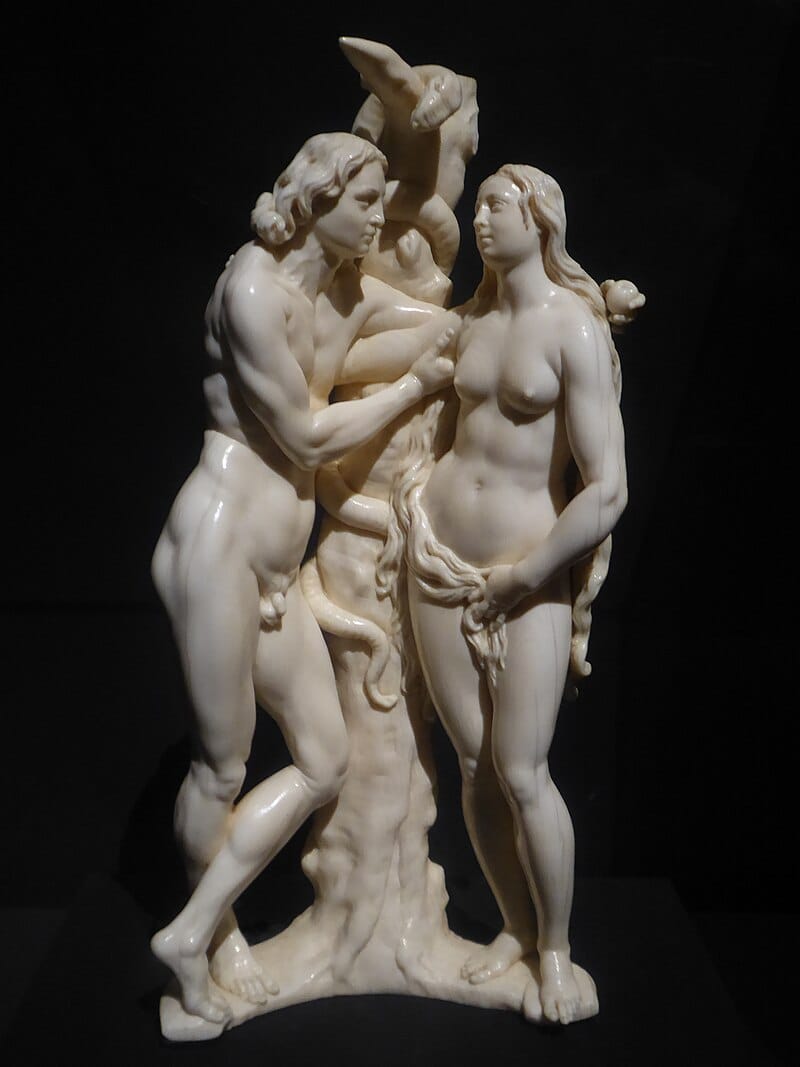
Below is Rembrandt's sly take on the subject, an etching from 1638 which shows Adam grabbing the apple away from a chubby Eve. Notice the elephant? That is Hansken, a famous elephant of the time, whom Rembrandt sketched several times.
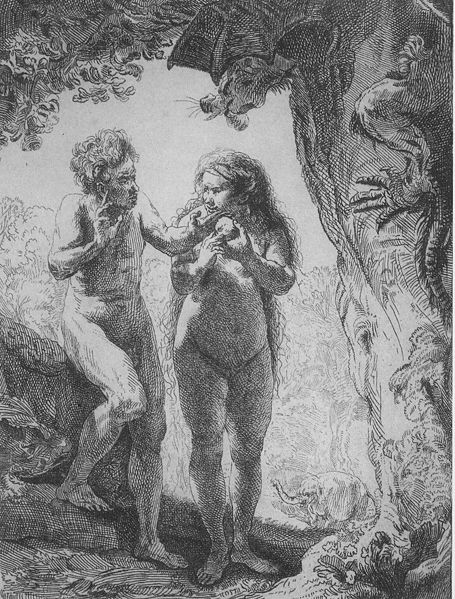
But it all ends here...
